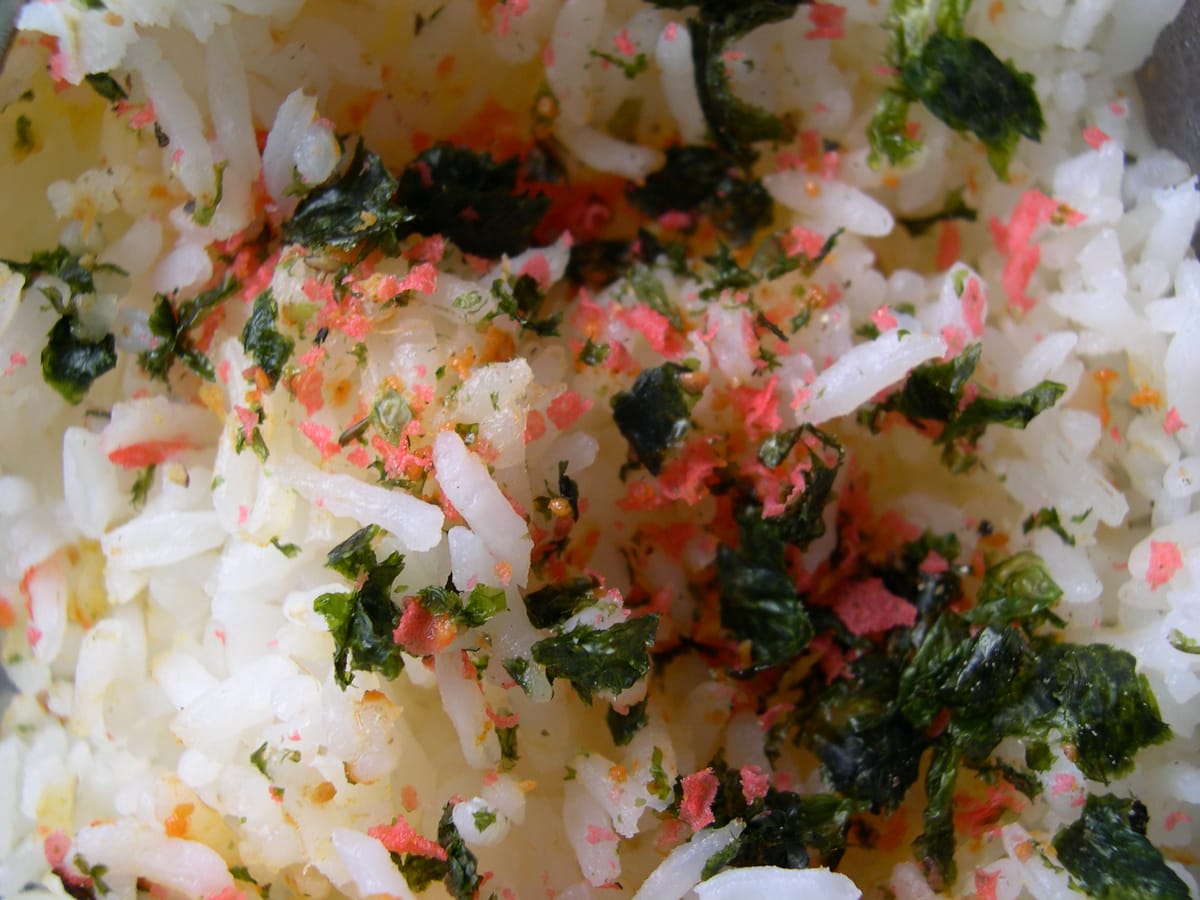The Flavour of Japanese Bureaucracy

Theo Cohn, BA International Relations and Chinese
The place I grew up in is a land with a famously unique culture where obscure, if not bizarre, traditions remain to this day. Japan’s conservative and proud reluctance to fully align many of its practices with the west, makes it difficult for occidentals to swallow. Nevertheless, its peculiarity makes it deliciously attractive.
Here is yet another reason to consider Japan a total quirk-ville. The lunch system in Japanese junior high schools, has attracted an on-going and spicy debate over the usage of Furikake, a peculiar Japanese dry seasoning sprinkled on top of rice, which consists of sesame seeds, chopped seaweed, dried bonito shavings, salt, etc. Furikake may be and unknown condiment for you and me, but it is presenting a major challenge to the Japanese bureaucratic system.
Recently, the mayor of the nation’s second largest city, Osaka, had a conference with teachers around the city on whether or not to allow schools in Osaka to provide Furikake.
The debate over the provision of school lunches or Kyushoku, which amounts to a boxed lunch known in Japanese as a Bento, has been an issue throughout the Japanese prefectures and indeed in every Japanese city. Widespread support for continuation of the programme persists because school lunches assist families who are unable to prepare lunches for their kids due to parental working conditions or finances. However, there have recently been claims that Kyushoku are failing to meet students’ cravings for something tasty.
One school in Osaka has been providing cold meals. As hygiene in Japan is a big deal, school lunches are often served straight from the fridge in order to avoid food poisoning. Yet, who would actually want to eat chilly eggplant stew or cold dried noodles? It is therefore unsurprising that students tend to leave their lunches half-eaten. To solve this problem, the mayor of Osaka came up with a tasty suggestion: Furikake.
Furikake comes in a variety of distinctive flavours that, for the Japanese palate, goes perfectly together with rice. Indeed, Furikake would appear to be the optimal delicious solution to boost students’ failing appetites. However, some large and possibly invincible groups have chosen to spoil the broth, namely, the Ministry of Health, Labour and Welfare and the Ministry of Education. These two government bodies have both rejected the mayor’s suggestion, objecting to the excessive intake of salt. Yet, it must be admitted that the ingredient is an intrinsic part of the deliciousness of Furikake.
On the other hand, some Japanese are asking non-nutritional questions about the controversy, raising issues that go to the stomach of contemporary Japanese politics. According to a recent survey, 78.1% of Japanese junior high schools are, by governmental decree, only allowing their students to ingest the standard government authorized kyushoku lunches (2012 survey by the Ministry of Education). Accordingly, many citizens are asking why bureaucrats have been given the authority to make decisions even regarding what students should or should not eat for lunch. The deep-rooted cause of this rather odd fuss is not merely the school lunch system, but the pettiness of the bureaucratic system itself. Japanese decision-making power lies in the hands of top elites in their respective ministries. From tax increases (Ministry of Finance) right down to what students put on their rice balls, it’s all dictated from above.
Without publicly challenging this super centralized and almost mystical authority clenched firmly in the gnashers of the upper bureaucratic elites, and as long as there are no checks and balances on the latter’s power, poor junior high schools students won’t get to sprinkle the bland, cold lunches with their beloved Furikake.



